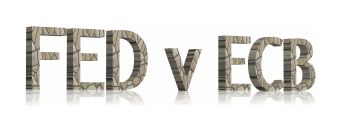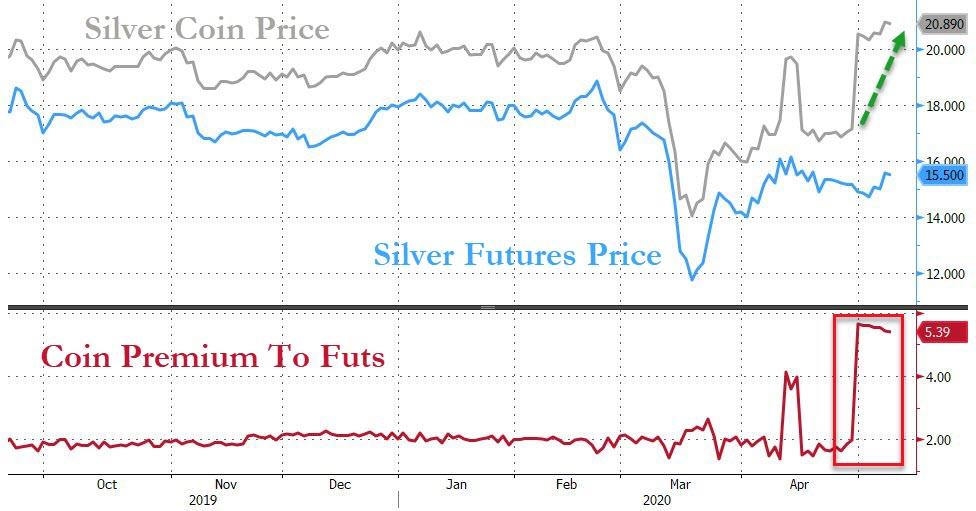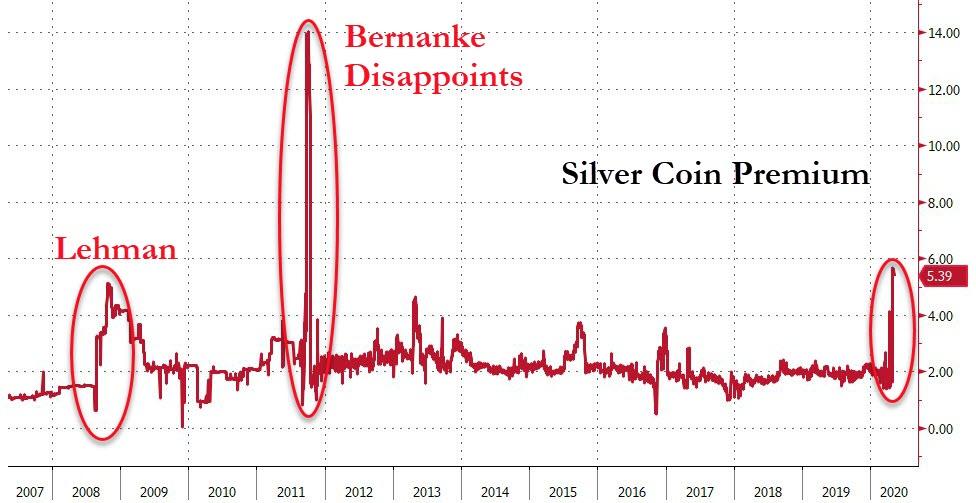Home » Posts tagged 'money printing' (Page 14)
Tag Archives: money printing
Why Government Mostly Helps People Who Need It the Least…Even During a Crisis
Why Government Mostly Helps People Who Need It the Least…Even During a Crisis

In January 2020, the NASDAQ stock market’s index stood just under 10,000. In the March crash, it fell to 7,000. As of July 10, 2020, it hit 10,600. The U.S. government’s economic policies produced a “recovery” for the rich who own the vast bulk of stocks. Their holdings are worth more now than before COVID-19 hit us. The other major benchmarks for securities, the Dow Jones Industrial Average and the Standard and Poor 500, show similarly dramatic, slightly smaller recoveries.
Massive government economic intervention—what most of its current beneficiaries have always denounced—subsidized those recoveries. The Federal Reserve pumped unprecedented amounts of new money into the U.S. economy after mid-March. That money poured into the stock market and fueled its rise. The U.S. Treasury provided unprecedented direct cash supports to much of corporate America.
Over the same time, government economic support for the working class was too little, too late, and totally inadequate to what could and should have been done. In their unequal impacts, government economic policies were cruel and unjust. In this, they resemble government public health policies. With under 5 percent of the world’s population, the United States accounts for about 25 percent of COVID-19 cases and about 24 percent of COVID-19 deaths globally. All but the most ideologically blinded (and government supporters) know what such a statistic means.
I focus here on how the government’s economic policies affected corporations versus employees, the rich versus the middle class and the poor. Direct government support sustained most corporations. Bigger and richer corporations hire more and better lobbyists, make larger actual or potential donations to politicians and parties, and so on. They thus got big portions of government help. In general, the pandemic and crash hurt medium and small businesses more than big ones, while the latter got disproportionate government help.
…click on the above link to read the rest of the article…
Can An Increase In the Demand For Money Neutralize the Effect of a Corresponding Increase in Money Supply?
CAN AN INCREASE IN THE DEMAND FOR MONEY NEUTRALIZE THE EFFECT OF A CORRESPONDING INCREASE IN MONEY SUPPLY?
According to popular thinking, not every increase in the supply of money will have an effect on the production of goods. For instance, if an increase in the supply is matched by a corresponding increase in the demand for money then there will be no effect on the economy. The increase in the supply of money is neutralized so to speak by an increase in the demand for money or the willingness to hold a greater amount of money than before.
What do we mean by demand for money? In addition, how does this demand differ from the demand for goods and services?
Demand for money versus demand for good
The demand for a good is not essentially the demand for a particular good as such but the demand for the services that the good offers. For instance, an individuals’ demand for food is on account of the fact that food provides the necessary elements that sustain an individual’s life and wellbeing.
Demand here means that people want to consume the food in order to secure the necessary elements that sustain life and wellbeing.
Likewise, the demand for money arises on account of the services that money provides. However, instead of consuming money people demand money in order to exchange it for goods and services.
With the help of money, various goods become more marketable – they can secure more goods than in the barter economy. What enables this is the fact that money is the most marketable commodity.
…click on the above link to read the rest of the article…
You Are Now Leaving FantasyLand: The Losses Will Be Taken By Somebody
You Are Now Leaving FantasyLand: The Losses Will Be Taken By Somebody
As the inverted pyramid collapses, the effects will be non-linear.
Round about late March, we entered a Financial FantasyLand in which all the sins and excesses of rampant financialization were going to be painlessly washed away. Mever mind the entire U.S. economy is an inverted pyramid of balance-sheet “value” and debt resting on a shrinking foundation of collateral; everyone would be made whole in the Federal Reserve’s Financial FantasyLand.
You are now leaving FantasyLand: trillions of dollars of phantom value have already vanished, and these catastrophic losses will be taken by somebody. The question is: who will get the concrete overshoes? Whose balance sheets will collapse to negative numbers, erasing all their phantom wealth?
Everyone was delighted to suspend reality and entertain the fantasy that there was a cost-free way to bail out financialization’s greed-soaked sinners: The Fed will simply print as many trillions as needed to make everyone whole. Since it doesn’t cost the Fed anything to digitally print endless trillions, this “solution” is completely, totally free.
What an amazing moment of grace: all our sins washed away in a rising river of Fed-printed money. With endless trillions available, everyone can get bailed out forever. Collateral, actual earnings and profits, none of that matters. The Fed’s grace is godlike in its infinite expansion.
This escape from karma, consequence and divine retribution was as temporal as the ride through FantasyLand. The wheel of karma has turned, The Tao is reversing, the banquet of asymmetric, non-linear consequences has been served and the Fed’s godlike powers will be revealed to be as delusional as the “value” and “wealth” that’s piled up in the balance sheets of the top 0.1%.
For there actually is a cost to digitally printing trillions to bail out all the predatory parasites of financialization.
…click on the above link to read the rest of the article…
Citibank Joins Mainstream Gold Bulls Forecasting Record Prices
Citibank Joins Mainstream Gold Bulls Forecasting Record Prices

Citibank has joined other mainstream gold bulls calling for record gold prices.
Citi raised its gold price forecast this week. It now projects a three-month price of $1,825 per ounce and for the yellow metal to head into record territory in 2021. Citi analysts expect gold to eclipse the $2,000 mark early next year.
Citibank joins several other mainstream players that now project record gold prices in the coming months. Last week, we reported Goldman Sachs now forecasts record gold prices within the next 12 months and Bank of America released a note saying gold could break its US dollar record by the end of the year if it continues to breach key resistance levels.
Meanwhile, SGMC Capital Founder & CEO Massimiliano Bondurri told Bloomberg he thinks gold may hit close to $2,000 by the end of this year and could rally further due to dollar weakness.
It can rally much, much further than here, for a number of reasons. First of all, we expect dollar depreciation to continue, so that’s likely to benefit gold.”
And Edison Investment Research is even more bullish, saying gold has the potential to go as high as $3,000.
Gold has been on a strong run over the last couple of weeks as the number of coronavirus cases has surged. Bullion is up better than 12% in this quarter.
Safe-haven demand has given gold a boost, but the big driver is the Federal Reserve and its unprecedented money printing. As US Global CEO Frank Holmes recently pointed out, there is a strong correlation between the expansion of the central bank’s balance sheet and the price of gold. We’ve already seen the balance sheet balloon by over $3 trillion in response to the coronavirus pandemic and it currently stands at over $7 trillion. Holmes said he thinks the central bank will likely grow its balance sheet to $10 trillion before all is said and done. If history is any teacher, that could mean $4,000 gold.
…click on the above link to read the rest of the article…
Into Darkness: Where The Fed Is Leading Us
Into Darkness: Where The Fed Is Leading Us

The system is hurtling towards breakdown. Protect yourself now.
As you may know, I was one of the very first voices publicly reporting on covid-19, issuing an alert that the virus was a significant pandemic event on Jan 23rd, 2020.
This was long before most media outlets even managed to write their first “It’s just the flu, bro!” article.
Using the same logic and scientific methodology I was trained in as a PhD, I was able to “predict” things well in advance of nearly every official or mainstream news source.
I’m using quotation marks around the word “predict” because it’s not really a prediction when you’re just extrapolating trends that are already underway.
Just as it’s not really a “prediction” to estimate where a thrown pitch will travel, it wasn’t much of a prediction to state that a novel virus with an R-Naught (R0) of well over 3 would be extremely difficult to contain once it arrived in a country. Note that I didn’t say impossible — South Korea, Australia, New Zealand, Thailand, Taiwan and Vietnam all get high marks for containment — but certainly difficult.
The US and the UK proved this in spades, as they’re both led by below-average ‘managers’ rather than leaders.
Leaders make tough decisions based on imperfect information. Managers dither and hedge and only make up their minds after the facts are already in and events well underway. Naturally, the US/UK managers were simply no match for the exponential rate that the Honey Badger Virus (aka Covid-19) spreads at.
I call it the Honey Badger virus because of its incredible ability to evade quarantine, as eagerly and easily as Stoeffle, as seen in this short enjoyable video:
…click on the above link to read the rest of the article…
ECB v Fed
ECB v Fed
QUESTION: Martin,
You mentioned in a recent blog post that the ECB, unlike the FED, can go bankrupt.
Can you explain further?
Not sure where you get the time, energy and resources to research and write all that you do buy it is truly amazing.
Regards,
M
ANSWER: The Federal Reserve does not need permission to create elastic money. It has the authority to expand or contract its balance sheet. However, it cannot simply print money out of thin air. The ECB is the only institution that can authorize the printing of euro banknotes. The Federal Reserve must back the banknotes by purchasing US government bonds. The Fed buys and sells US government bonds to influence the money supply whereas the ECB influences the supply of euros in the market by directly controlling the number of euros available to eligible member banks. This structure was created because of Germany’s obsession with its own hyperinflation of the 1920s.
Each member state retained its central bank and those central banks issue the banknotes — not the ECB. Therefore, the ECB works with the central banks in each EU state to formulate monetary policy to help maintain stable prices and strengthen the euro. The ECB was created by the national central banks of the EU member states transferring their monetary policy function to the ECB, which in effect operates on a supervisory role.
There are four decision-making bodies of the ECB that are mandated to undertake the objectives of the institution. These bodies include the Governing Council, Executive Board, the General Council, and the Supervisory Board.
…click on the above link to read the rest of the article…
History Tells Us to Own Gold When Central Banks Run Out of Control
HISTORY TELLS US TO OWN GOLD WHEN CENTRAL BANKS RUN OUT OF CONTROL
“Extraordinary Popular Delusions and the Madness of Crowds” happen with regular intervals as Charles Mackay wrote about. It seems that the world experiences more delusions and madness than truth and sanity.
The pattern is always the same. The economy is never in equilibrium but moves in cycles of boom and bust. If these cycles were allowed to take their natural course, they would move up and down in a steady rhythm without reaching extremes at the top or bottom.
GOVERNMENTS’ PRIME OBJECTIVE IS TO BE REELECTED BY BUYING VOTES
But human psychology and hunger for power prevent these natural cycles from taking place. Most leaders, whether they are kings or presidents, all have fear of failure combined with illusions of grandeur. As the economy peaks and the good times come to an end, they know that the best chance of not being ejected is for the good times to continue. Today’s leaders’ primary objective is to hang on to power by buying votes.
And how can they buy votes when the economy is turning down and the coffers are empty? Easy! You just print money out of thin air, as I discussed in my article a couple of weeks ago. The Romans did it, and so did the French, the Brits, Germans, Argentinians, and everyone else.
PRICES DON’T GO UP – VALUE OF MONEY GOES DOWN
Initially, when a country prints money to extend the prosperity, nobody notices that it is fake. After all, they are still called dollars or pounds. But gradually things become more expensive. The popular interpretation of increasing prices is calling it inflation. Nobody actually notices or understands that it is not prices going up but the value of the money going down as more and more which has zero value is issued.
…click on the above link to read the rest of the article…
Why the New Economics Just Boils Down to Printing More Money
WHY THE NEW ECONOMICS JUST BOILS DOWN TO PRINTING MORE MONEY
[Editor’s Note: this article is adapted from a 2003 essay in the Quarterly Journal of Austrian Economics entitled “New Keynesian Monetary Views: A Comment.” As economists abandon theory in favor of makeshift plans to flood the economy with stimulus, Hülsmann here provides some helpful reminders of the fundamental problems behind the current economic consensus on money.]
The essential fallacy of John Maynard Keynes and his early disciples was to cultivate the monetary equivalent of alchemy. They believed that paper money was a suitable means to alleviate the fundamental economic problem of scarcity. The printing press was, at any rate, under certain plausible conditions of duress, a substitute for hard work, savings, and cutting prices (Hazlitt 1959, 1960).
The self-styled new Keynesians have not at all abandoned this fallacy, and they therefore do not differ in any essential respect from the old Keynesians, in spite of the pains they take to distinguish themselves from the latter. The new Keynesian recommendation for monetary policy is to “stabilize the growth of aggregate demand.” In plain language this means that the monetary authorities should never stop flooding the economy with paper money. This is recognizably the core tenet of the old Keynesian monetary program, which in itself had been nothing but even older fallacies clothed in the new language of aggregate analysis.
In many respects, new Keynesian views on monetary theory and policy seem to be even more fallacious than those of their predecessors. Whereas Keynes and his immediate followers were still trained in the old-fashioned art of economic reasoning, the new Keynesians are macroeconomic purebreds.1 Their expertise lies more or less exclusively in the field of modeling.
…click on the above link to read the rest of the article…
Blain’s Morning Porridge – June 11 2020: The illusion wears thin
Blain’s Morning Porridge – June 11 2020: The illusion wears thin

“It is the system that deserves to be blamed. What those who wish to perpetuate the system deserve is another question.”
The Fed did exactly what was expected – nay, demanded! Asset purchase volumes will be maintained while rates will remain near zero for the next 2 years. Hallelujah! The market shrugged aside indications a second virus wave is hitting across parts of the US and Europe…
If Fed-Head Jay Powell has said anything else, there would have been a hissy-fit mini-taper-tantrum. The dominant force on markets will remain central banks juicing markets – and all the entails in terms of distortion. The immediate lesson for investors is – keep buying! The Fed and the other CBs have got your back. They can’t afford for markets to stumble.
Problem is… little the Fed said is likely to change the reality of the coming recession. The downturn might not be as deep or as bad as we originally feared, but whatever nonsense some analysts are spouting in terms of hopes for a V-Shape recovery… recession is coming. It might be less damaging, and less long-lived than we fear… But..
There is a new and growing dimension to this crisis…
The Black Lives Matter demonstrations around the globe highlight the threat of social unrest, and political dislocation. When the virus kicked in, I commented a few times how lockdown frustrations and hot summer nights could be a recipe for riots. But, what’s happened is much more fundamental – and should be a critical concern for investors in terms of how it changes the political narrative.
Unrest is a political issue – and politics have a seriously underestimated ability to roil markets.
…click on the above link to read the rest of the article…
This Time, the Fed Can’t Avoid Inflation, Says Expert
This Time, the Fed Can’t Avoid Inflation, Says Expert

This week, Your News to Know rounds up the latest top stories involving gold and the overall economy. Stories include: Is the latest QE program finally going to spike prices, gold cannot be printed by central banks, and virus intensifies the flow of gold to U.S. vaults.
Can the Federal Reserve avoid inflation once again?
As the dust around the 2008 financial crisis settled, some may have been surprised that the eagerness of the Federal Reserve to print money did not cause inflation, or even hyperinflation. Yet those who are expecting the same turnout this time around should look at the underlying nature of both crises.
FXEmpire’s Arkadiusz Sieron points out that 2008 was, in essence, a banking crisis, and banks were the ones receiving aid in the form of bank reserves. While they function in a similar capacity, these notes differ from actual money as they do not enter the economy but are rather used as a medium of exchange between banks. Adding to that was a lack of appetite among individual creditors to take on debt combined with a lack of willingness to issue loans on the banks’ part, as shown by the growth rate of credit supply reaching negative territory.
Now, the scenario appears to be the exact opposite, as consumers and business owners are the ones primarily affected by the crisis. Sieron argues that there is no question as to whether the stimulus will enter the money supply, as programs like the Term Asset-Backed Securities Loan Facility and Main Street Lending Program will ensure funding for eager debtors.
…click on the above link to read the rest of the article…
Here Is The Stunning Chart That Blows Up All Of Modern Central Banking
Here Is The Stunning Chart That Blows Up All Of Modern Central Banking
Several years ago, when conventional wisdom dictated that to push inflation higher and jumpstart lethargic economies, central banks have to push rates so low as to make saving punitive and force consumers to go out and spend their hard earned savings, several central banks including the ECB, SNB and BOJ crossed into the monetary twilight zone by lowering overnight rates negative.
Then, year after year, we would hear from the likes of Kuroda and Draghi how the BOJ and ECB will continue and even extend their insane monetary policy, which now includes the purchase of 80% of all Japanese ETFs…
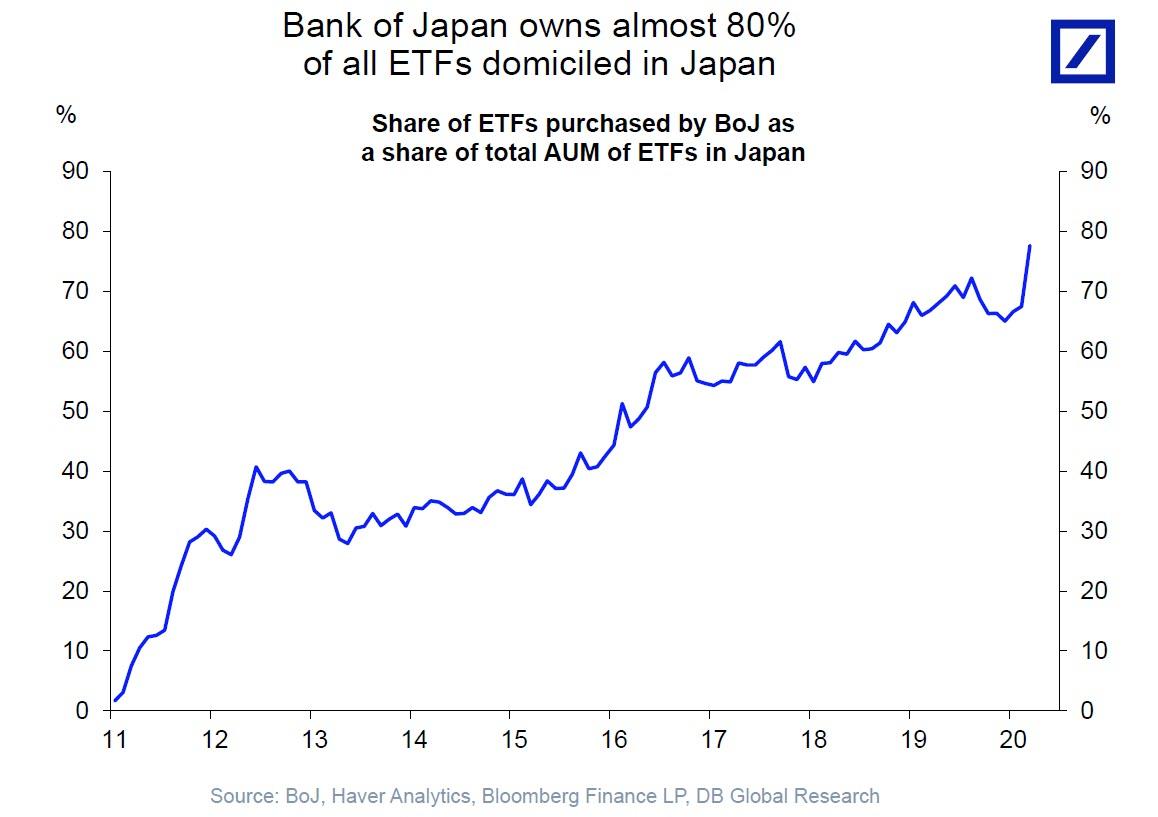
… until the central banks hit their inflation targets of 2%.
And yet, year after year, the BOJ would not only not hit its inflation target but appeared to drift ever lower, as did the ECB, SNB and any other bank that had gone NIRP, confounding all economists and central bankers: why was this happened if rates were negative? Why were consumers not taking their money out of the bank and spending it, pushing inflation higher?
Nobody had an answer, until in late 2015, we offered a glimpse into what was structurally flawed with this “model”: using a report by Bank of America, we showed that not only had household savings rates not declined in countries with negative rates, they had in fact risen. There was a simple reason for this, as the BIS had highlighted: ultra low rates may perversely be driving a greater propensity for consumers to save as retirement income becomes more uncertain.
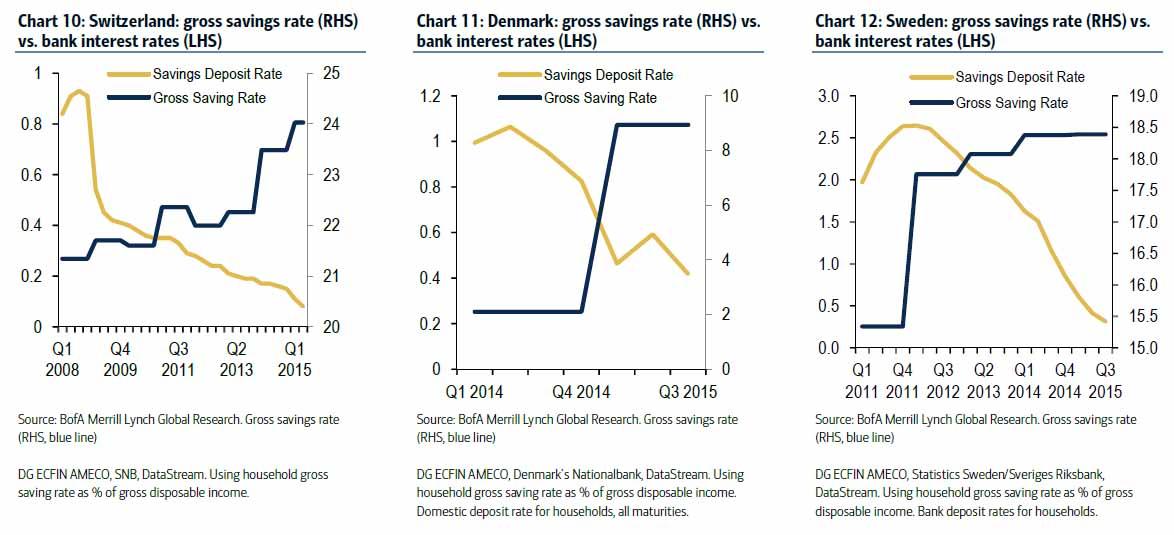
What logically followed from this is that inflation would also track rates lower, resulting in a crushing blow to economic orthodoxy where the only weapon central banks had left to spark an economic – read inflationary – recovery was to ease monetary conditions even more in hopes that eventually they would drop low enough to spark the long-awaited recovery.
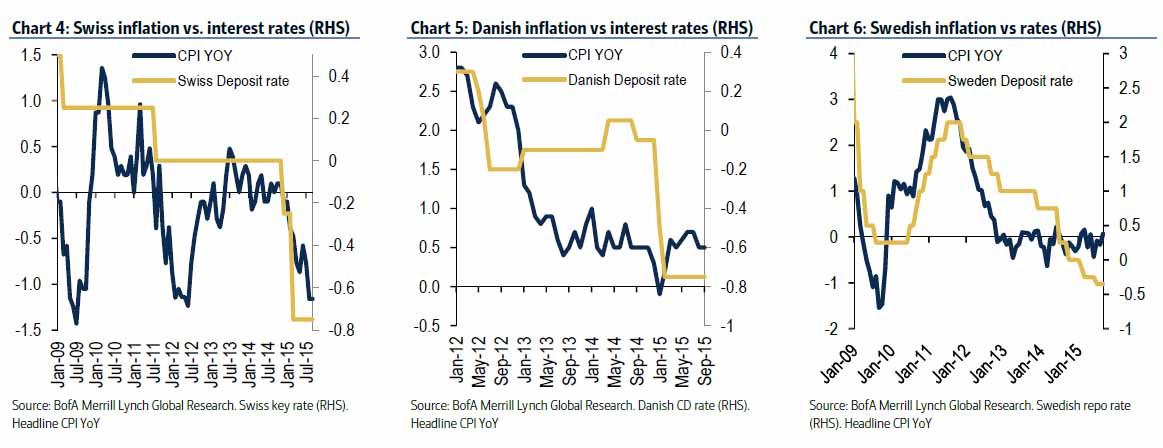
…click on the above link to read the rest of the article…
First the Deflationary Deluge of Assets Crashing, Then the Tsunami of Inflation
First the Deflationary Deluge of Assets Crashing, Then the Tsunami of Inflation
Once the pool of greater fools dries up, stocks crash regardless of what the Fed does or bleats.
The conventional view is the Federal Reserve creating trillions of dollars out of thin air will trigger inflation. Not so fast. Yes, creating trillions of dollars out of thin air will eventually devalue the purchasing power of each dollar–what we call inflation–but first all the unprecedented asset bubbles will pop and valuations will crash.
Let’s call this a deflationary deluge as unsustainable asset prices are eroded by a hard rain of reality. To understand the enormity of the current bubbles, please glance at the charts below. The first chart depicts recent stock market bubbles; note the extreme height of the current bubble.
The next chart shows the S&P 500, and the extraordinary amplification of the bubble that reached its apex in February 2020. Note that each ramp higher takes less time to reach its peak. The most recent snapback rally gained about 870 points in a mere two months–a move that took roughly 5 years in the early 2000s.
Real estate and other assets have also soared in unprecedented bubbles. Old bungalows that sold for $150,000 less than 20 years ago are now supposedly worth over $1 million.
What made this possible? An equivalent bubble in debt. Every sector–household, corporate and government–has borrowed astronomical sums of money to keep the bubble economy glued together. In this rising tide of currency and capital, whatever had scarcity value–real estate, art, stocks–was purchased with the borrowed money as a store of value and / or as a source of income in a world starved of low-risk yields by central banks that dropped interest rates to near zero.
…click on the above link to read the rest of the article…
Globalization and Financialization Are Dead, and so Is Everything That Depended on Them
Globalization and Financialization Are Dead, and so Is Everything That Depended on Them
Financialization was never sustainable, and neither was the destructive globalization it enabled.
All the happy-story analogies to past pandemics being mere bumps in the road miss the mark. A popular claim is that the 1918-1919 flu pandemic killed millions but no biggie, the Roaring 20s started the following year. It’s onward and upward, baby, once we toss the masks.
Wrong. Completely, totally, dead wrong. The drivers of the past 75 years of growth– globalization and financialization–are dead, and so is everything that depended on them for “growth”. (Growth is in quotes because once external costs and currency arbitrage are factored in, most of what’s been glorified as “growth” is nothing but losses covered by accounting trickery.)
Here’s what’s poorly understood: globalization and financialization die when they stop expanding. Just as a shark dies if it stops swimming forward, globalization and financialization die once they stop expanding, because their viability depends on expansion.
Globalization and financialization have been losing momentum for years. Under the guise of “opening markets,” globalization has stripmined every economy that can’t print a reserve currency and hollowed out economies globally as only globally competitive sectors survive globalization. The net result is that once vibrant, diversified economies have been reduced to fragile monocultures completely dependent on global flows of capital and spending for their survival.
Tourism is a prime example: every region that has seen its local economy crushed by global arbitrage and corporate hegemonies, leaving global tourism as its sole surviving sector, has been devastated by the drop in tourism, which was always contingent on disposable income and credit expanding forever.
…click on the above link to read the rest of the article…
The Enslavement of Infinite Money
The Enslavement of Infinite Money

The phrase “don’t fight the Fed” is an unfortunate but popular delusion. It presupposes that the central bank has limitless power to direct the economy because it can print limitless money. I’m not sure where this idea comes from, but consider the fact that anyone today who is under 30 years old was barely old enough in 2008 to understand or care about the credit collapse. These people spent their formative years knowing only stimulus and QE. In their minds, this is the norm, and they think it always works because they haven’t yet witnessed a collapse.
I would say a better phrase for the 2020s is “The Fed is not going to save you”; the Fed is not a superhero and it does not have the power nor the inclination to protect the little people from economic folly. This should be readily apparent today, as the COVID-19 pandemic continues to spread and the central bank can’t seem to cure it with Quantitative Easing.
My position has always been that the Fed has no intention of saving the economy, only making it appear as if they care. This is evident in the fact that they created the Everything Bubble in the first place with years of near zero interest rates, then abruptly hiked interest rates into economic weakness, just like they did during the Great Depression. All it took was a few rate increases to cause stock markets to plunge in December 2018; liquidity was strangled and repo markets became unstable. Jerome Powell knew perfectly well that this would be the result; he openly discussed it in the minutes of the October 2012 Federal Open Market Committee.
…click on the above link to read the rest of the article…


